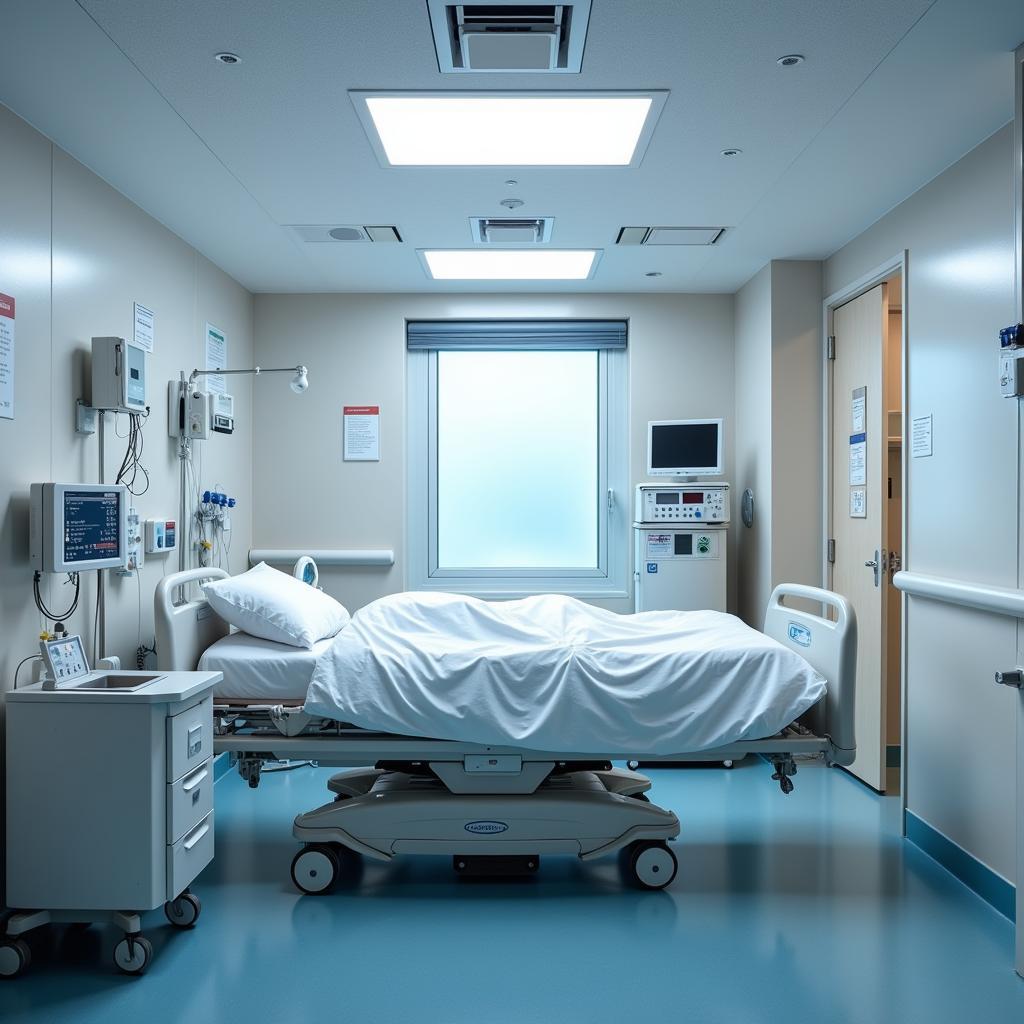Hospital Isolators play a crucial role in protecting both patients and healthcare workers from the spread of infectious diseases. These specialized units provide a controlled environment, minimizing the risk of contamination and promoting a safe healing space. This article delves into the intricacies of hospital isolators, exploring their benefits, types, and applications within modern healthcare settings.
Understanding the Importance of Hospital Isolators
Hospital isolators are essentially self-contained units designed to isolate patients with highly contagious infections. They offer a higher level of protection compared to standard isolation rooms. By creating a physical barrier, isolators prevent the transmission of airborne pathogens, protecting vulnerable patients and staff. The importance of these units cannot be overstated in controlling the spread of infections like tuberculosis, measles, and other airborne diseases.
Types of Hospital Isolators and Their Applications
There are two main types of hospital isolators: positive pressure isolators and negative pressure isolators. Positive pressure isolators protect immunocompromised patients by preventing contaminated air from entering the unit. This type of isolator is crucial for patients undergoing chemotherapy or organ transplantation. Conversely, negative pressure isolators prevent contaminated air from escaping the unit, protecting healthcare workers and other patients from exposure to infectious diseases. These are typically used for patients with conditions like tuberculosis or COVID-19.
Negative Pressure Isolators: A Closer Look
Negative pressure isolators function by maintaining a lower air pressure inside the unit compared to the surrounding environment. This pressure differential ensures that air flows into the isolator, preventing the escape of airborne pathogens. HEPA filters are integral components of these systems, removing contaminants from the air before it is exhausted. This meticulous filtration process is critical in minimizing the risk of infection transmission.
What to Expect Inside a Hospital Isolator
Inside a hospital isolator, you’ll find a controlled environment designed to prioritize patient comfort and safety. The unit typically includes a bed, monitoring equipment, and communication systems.  Hospital Isolator Interior: Prioritizing Patient Comfort Healthcare professionals access the patient through glove ports, allowing them to provide care while maintaining the integrity of the isolation barrier. Regular cleaning and disinfection protocols are strictly adhered to, further reducing the risk of infection.
Hospital Isolator Interior: Prioritizing Patient Comfort Healthcare professionals access the patient through glove ports, allowing them to provide care while maintaining the integrity of the isolation barrier. Regular cleaning and disinfection protocols are strictly adhered to, further reducing the risk of infection.
Choosing the Right Hospital Isolator: Key Considerations
Selecting the appropriate hospital isolator requires careful consideration of several factors. The patient’s specific medical condition, the level of contagiousness of the infection, and the available resources within the healthcare facility all play a role in the decision-making process. Consulting with infection control specialists is crucial to ensure the chosen isolator effectively meets the patient’s and the facility’s needs.
Conclusion
Hospital isolators are indispensable tools in modern healthcare, offering a critical line of defense against the spread of infectious diseases. By providing a controlled and protected environment, these units ensure patient safety and facilitate effective infection control. Understanding the different types of isolators and their specific applications is essential for healthcare professionals in providing optimal care and minimizing the risk of transmission. Remember, hospital isolators are a key component of a comprehensive infection control strategy.
FAQ
- What is the primary function of a hospital isolator?
- What are the different types of hospital isolators?
- When are positive pressure isolators used?
- How do negative pressure isolators work?
- What safety measures are implemented within a hospital isolator?
- Who decides which type of isolator is appropriate for a patient?
- How are hospital isolators cleaned and disinfected?
For support, please contact us at Phone Number: 02437655121, Email: [email protected] or visit our address: No. 298 Cau Dien Street, Minh Khai, Bac Tu Liem, Hanoi, Vietnam. We have a 24/7 customer service team.